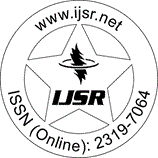Downloads: 118
India | Gynaecology | Volume 4 Issue 3, March 2015 | Pages: 488 - 490
Study of Abnormal Umbilical Coiling Index and its Outcome in Rural Area
Abstract: Objective To evaluate relationship between umbilical coiling index (UCI) and perinatal outcome. Material & Methods Present prospective study was conducted on 384 term patients with singleton live pregnancy in rural area at Kamineni Institute of Medical Sciences, Narketpally. UCI was determined by dividing total number of complete vascular coiling by umbilical cord length in centimeters. Then relationship between abnormal UCI and intrapartum fetal heart rate (FHR), mode of delivery and neonatal outcome like birth weight, meconium stained liquor and APGAR score were evaluated. Results & Discussion Mean UCI was 0.21 + 0.78 coils per cms. It is divided into three groups- hypocoiled (UCI 90th percentile). Normocoiled were predominant in 75.7 % (291), 14.6 % (56) cases were hypocoiled and 9.7 % (37) were hypercoiled. Hypocoiled cords were associated with pregnancy induced hypertension, abruptio placenta, oligohydramnios, intrapartum foetal heart rate abnormalities, instrumental vaginal delivery, increased operative delivery, meconium staining, low APGAR scores, more NICU admissions and low birth weight (P value
Keywords: Hypercoiling umbilical cord, Hypocoiling umbilical cord, Fetal distress, Perinatal outcome, Umbilical cord coiling index UCI
How to Cite?: Sonali Rathi Somani, "Study of Abnormal Umbilical Coiling Index and its Outcome in Rural Area", Volume 4 Issue 3, March 2015, International Journal of Science and Research (IJSR), Pages: 488-490, https://www.ijsr.net/getabstract.php?paperid=SUB151986, DOI: https://dx.doi.org/10.21275/SUB151986
